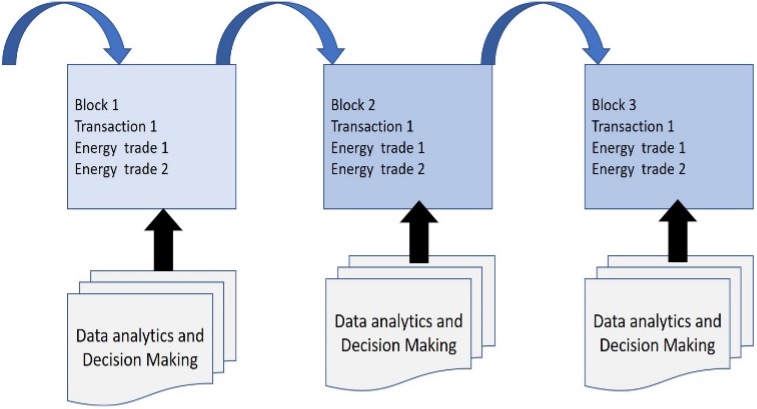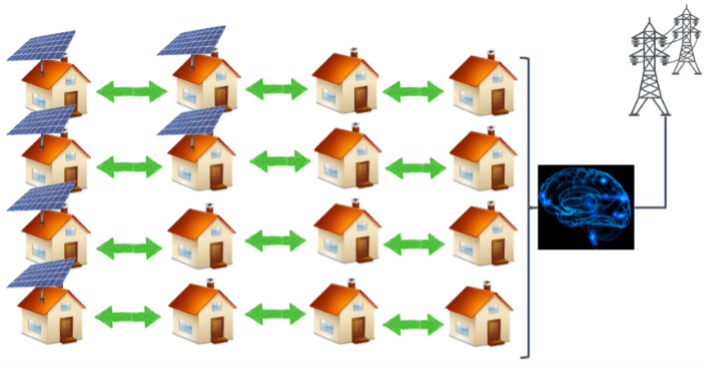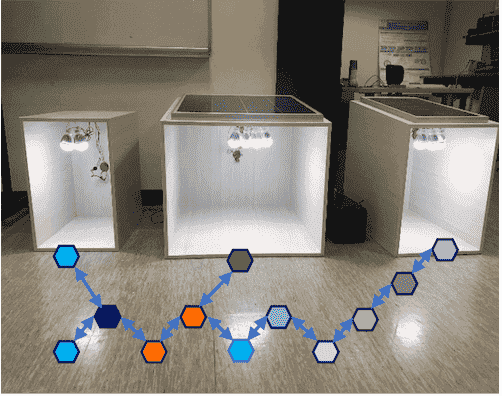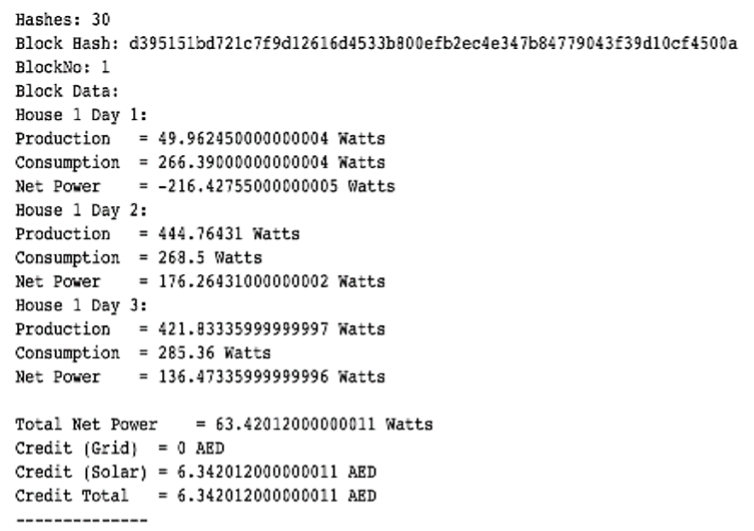Smart Energy for Smart Cities
Written by Vinod Pangracious, Chair and Associate Professor in Electrical and Computer Engineering, American University in Dubai, United Arab Emirates
In today's world, there is a growing demand for intelligent applications to make city life both interesting and sustainable. This paper introduces a Blockchain-based peer-to-peer energy transaction framework for trading the decentralized clean energy within a connected society. The Smart Energy-Trading model is designed to initiate transactions autonomously while interacting with home automation unit. The application autonomously manages generation, consumption, and distribution of clean energy using distributed renewable energy sources. The proposed application is an autonomous peer-to-peer transaction model that aims to increase clean energy production, consumption, and optimization, which indeed will reduce greenhouse gas emissions in metro areas where the excessive clean energy generated from the renewable energy sources, including homes, office buildings, and factories are autonomously traded within a connected society.
Introduction
A Blockchain [1][3] is a peer-to-peer network based on a shared distributed data structure. Since its start in 2008, Blockchain has emerged as a major innovative and disruptive technology to revolutionize the way we interact, automate, trace, and track digital transactions and data storage. Trust is the foundational characteristic of Blockchain and uses digital signatures and keys to authorize and validate transactions and positively identify the initiator. New blocks created over time are digitally verified and appended to the chain, ensuring data integrity and creating a verifiable data structure trail where the shared and transparent blocks provide visibility to all participants simultaneously.


Figure 1. (A) The Smart Energy Chain implementation model. (B) Illustrates the function of Smart Energy Chain model (On-grid).
A hybrid Blockchain technology developed and used as the underlying technology to provide flexibility to home and business would protect private data and only results and decisions. This technology will enable us to produce significant improvements to secure data in various fields, including personal, medical, banking, financial, trading, and legal data. Moreover, decentralized autonomous blocks open a new world of research and development opportunities in solution optimization, planning, and knowledge and data management. Normally, the nodes-in-chain contribute to network consensus by including transaction data in a block. An important feature of Blockchain is that there is no central data-block processing or distributing the data, but every block can execute algorithms independently and send information to the chain. The data-blocks were integrated with ability to interact with simple machine learning algorithms to process the data and propagate the decision back into the chain [2][4]. A data-block with access to learning ability will be able to process data and take decisions on certain matters decided by the user. The peer-to-peer transaction framework is designed to be a user-friendly application, where human life enhancements and business models are integrated and enhanced through the collection of decentralized interacting and processing blocks-in-chain, where each block has embedded ability to access the decision-making process of the data collection and processing device, as illustrated in Figure 1.
Smart Energy-chain for Smart Cities
Smart Energy-Chain is a demonstration of peer-to-peer transaction application where green energy is generated and traded with potential customers who are energy deficit and already part of a transaction model network. The Smart Energy-Chain is a peer-to-peer clean energy trading platform where renewable energy from a small-scale distributed energy source, such a home or an office building with solar or wind power generation capability, is traded among the local energy prosumers and consumers [4][5]. The motivation behind introducing Smart Energy-Chain is the vision of building a sustainable and intelligent ecosystem for humanity. Sustainable life means achieving self-sufficiency in every aspect of human life. We consider energy, education, and financial independence to be the basic requirements of a sustainable society. The Energy-Chain project is based on the concept of clean energy self-sufficiency to achieve carbon neutrality in sustainable cities, where a house or a building with solar or wind energy generation capacity will act as a distributed energy source, called Energy-Chain Homes [5]. Buildings or homes that have the solar or wind power system installed will be able generate, consume, and trade the excess energy produced with those in need of energy for home usage, electric car charging, or to other homes that do not generate sufficient energy, whether it's clean or not. Every house or building validated in the system is considered as a Smart Energy-Chain digital transaction block. The validated blocks will be able to access information from network about the excess power generation and power required for the insufficient homes and buildings. The platform accepts not only prosumers with clean energy provision but also non-clean energy consumers. Therefore, one does not have to have a clean energy system to be able to use clean energy through the Energy-Chain. A simple three-house Smart Energy-Chain protype and transaction block demonstration is illustrated in Figure 2A. Figure 2B illustrates the content of blocks in Energy-Chain. Currently, all validated blocks will have the information of prosumers and consumers and provide information about the total power generation, consumption, and excess power available for trade and a positive identification of prosumers. The transaction model platform has also a graphical user interface, where a user can visualize the Blockchain network and energy generation and consumption information, as illustrated in Figure 2B.


Figure 2. (A) Illustrates the three-house Smart Energy Chain prototype. (B) Illustrates the generated contents of a transaction.
Energy-Chain Power Transaction Model
The event and transaction of trading energy through a digital transaction model is as simple as just using any other mobile application. The decentralized data analytic modules are already trained to execute peer-to-peer energy trade on a day-to-day basis autonomously. This information will be placed in the public section of the Blockchain network for other customers who need energy to bid the token to generate an energy transaction. We use an on-grid and off-grid Smart Energy-Chain to distribute Smart Energy among users.
Conclusion
The focus of Smart Energy-Chain is to establish a small-scale business platform for anyone with clean energy generation capacity using solar or wind. Also, it helps to create awareness about the sustainable future and the impact of promoting the use of clean energy and to actively contribute to the de-carbonization to build sustainable city-societies. Smart Energy-Chain is a sustainable solution to the growing demands of the energy requirements and also considered as a key reform to develop smart cities. This transaction model led by energy-chain is a digital solution and is destined for the development of a sustainable city.
References
- Nakamoto S. Bitcoin: A peer-to-peer electronic cash system, 2008. http://bitcoin.org/bitcoin.pdf
- Chalkiadakis G Akasiadis C. 2016. Decentralized large-scale electricity consumption shifting by prosumer cooperatives. in: Kaminka GA, Fox M, BP (Eds.), ECAI 2016. In: Proceedings of the 22nd European Conference on Artificial Intelligence (Jan. 2016), 175–183. https://doi.org/10.3233/978-1-61499-672-9-175
- J. B. Ernst Z. Hong C. Feng Cai, Z. Wang and V. C. Leung. 2018. Decentralized applications: The Blockchain- empowered software system. IEEE Access 6 (Jan. 2018), 53019–53033. https://doi.org/10.1109/ACCESS.2018.2870644
- T. N. Dinh and M. T. Thai. 2018. AI and Blockchain: A Disruptive Integration. Computer 51, 9 (Sept. 2018), 48–53. http://dx.doi.org/10.1109/MC.2018.3620971
- De Beaufort R Plana R Imbault F, Swiatek M. 2017. The green Blockchain: Managing decentralized energy production and consumption. In: Proceedings of the 2017 IEEE International Conference Environ Electrical Engineering and 2017 IEEE International Commercial Power System Europe (Jan. 2017). https://doi.org/10.1109/EEEIC.2017.7977613
This article was edited by Aris Gkoulalas-Divanis.
To view all articles in this issue, please go to February 2022 eNewsletter. For a downloadable copy, please visit the IEEE Smart Cities Resource Center.

To have the eNewsletter delivered monthly to your inbox, join the IEEE Smart Cities Community.
Past Issues
To view archived articles, and issues, which deliver rich insight into the forces shaping the future of the smart cities. Older eNewsletter can be found here. To download full issues, visit the publications section of the IEEE Smart Cities Resource Center.



